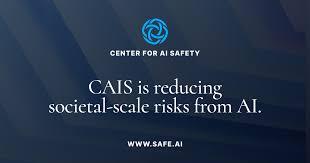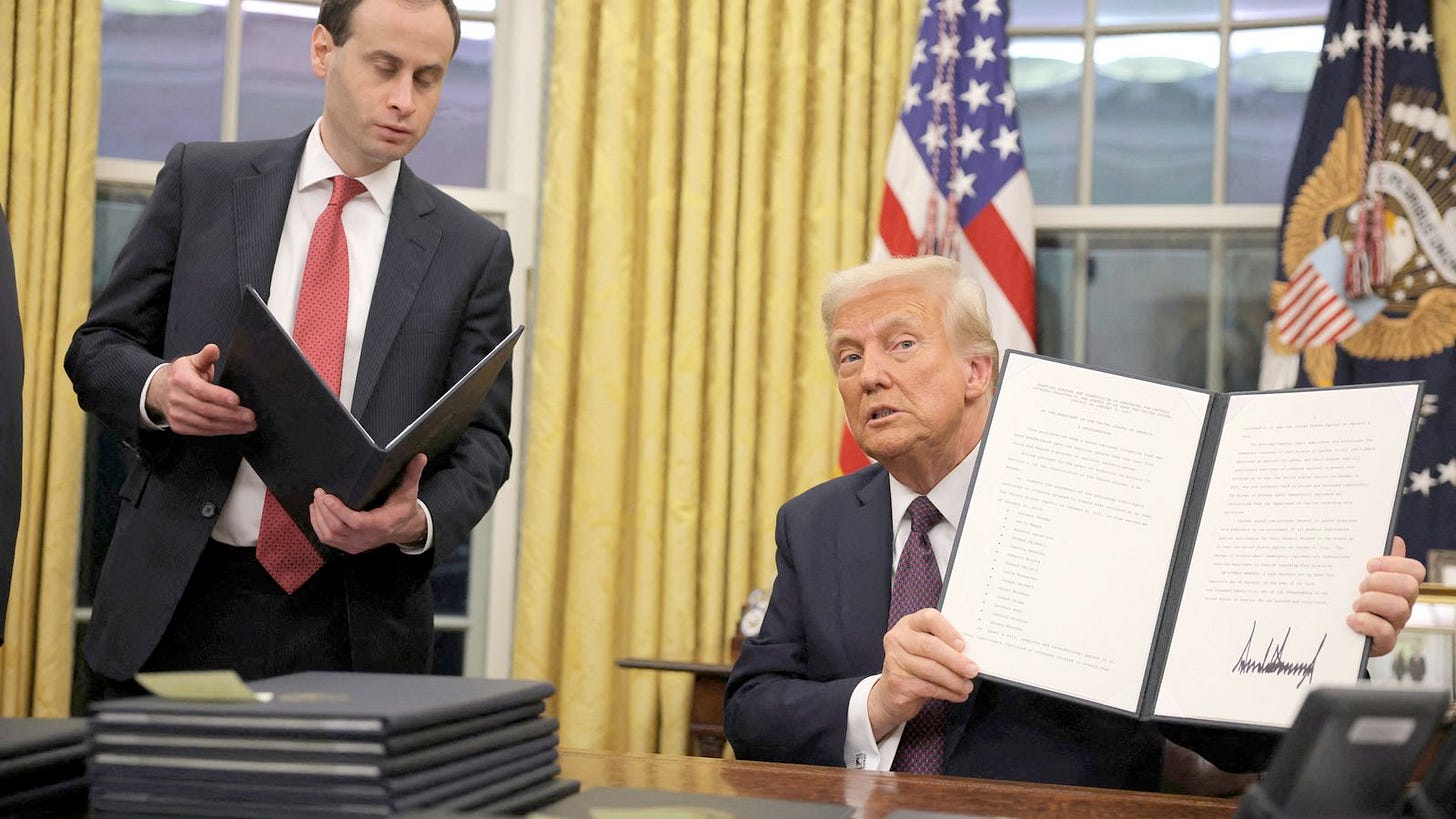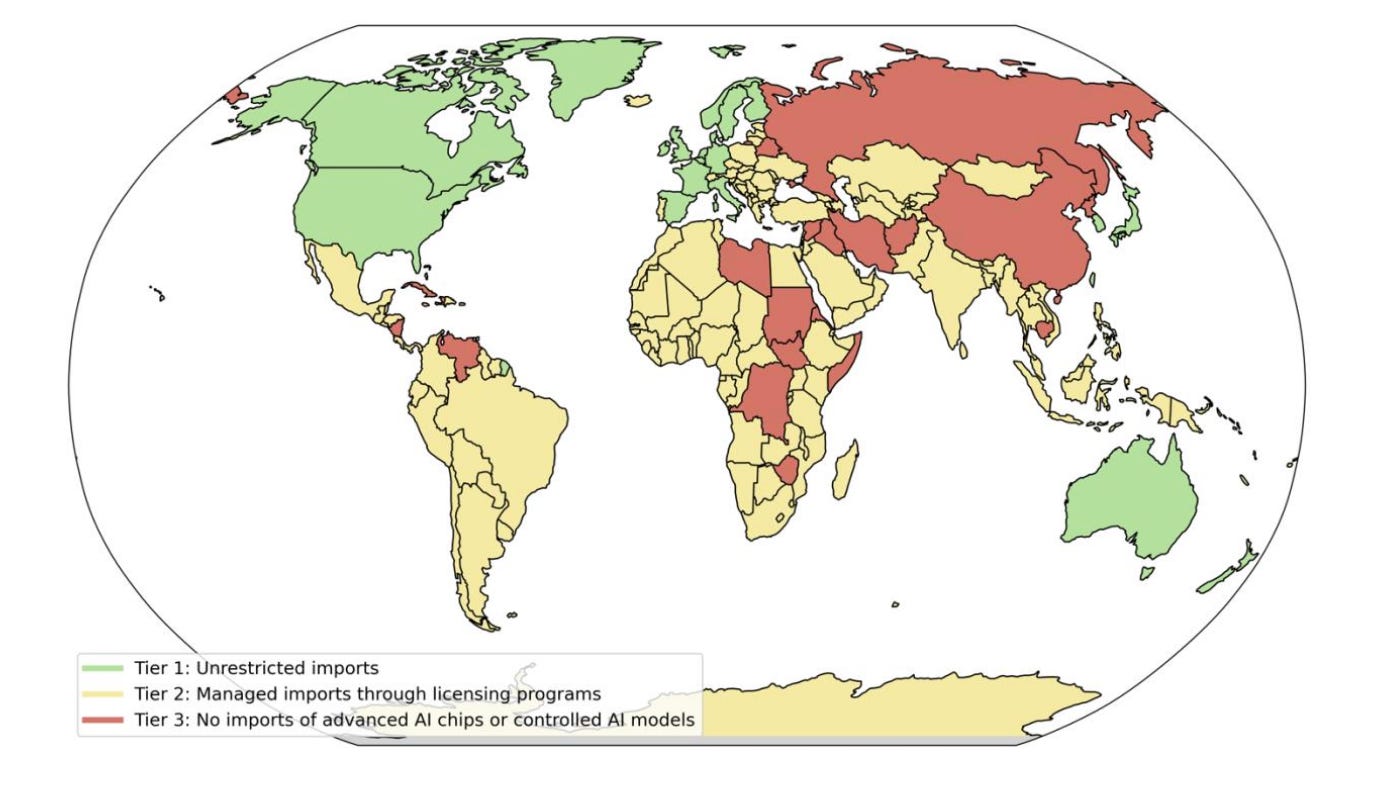
Jan 23, 2025
https://newsletter.safe.ai/p/ai-safety-newsletter-46-the-transition
BY: Corin Katzke and Dan Hendrycks
Welcome to the AI Safety Newsletter by the Center for AI Safety. We discuss developments in AI and AI safety. No technical background required.
Listen to the AI Safety Newsletter for free on Spotify or Apple Podcasts.
The Transition
The transition from the Biden to Trump administrations saw a flurry of executive activity on AI policy, with Biden signing several last-minute executive orders and Trump revoking Biden’s 2023 executive order on AI risk. In this story, we review the state of play.
Trump signing first-day executive orders. Source. The AI Diffusion Framework. The final weeks of the Biden Administration saw three major actions related to AI policy. First, the Bureau of Industry and Security released its Framework for Artificial Intelligence Diffusion, which updates the US’ AI-related export controls. The rule establishes three tiers of countries 1) US allies, 2) most other countries, and 3) arms-embargoed countries. Companies headquartered in tier-1 countries can freely deploy AI chips in other tier-1 countries, and in tier-2 countries subject to limits. They can also deploy controlled models (trained with at least 1026 FLOP) in both tier-1 and tier-2 countries, but only develop those models in tier-1 countries. Companies headquartered in tier-2 countries face limits on how many chips they can deploy in tier-1 and tier-2 countries, and are prohibited from training or deploying controlled models. Companies headquartered in tier-3 countries are prohibited from deploying AI chips, or developing or deploying controlled models in any country. Companies in any country are prohibited from deploying AI chips or developing or deploying controlled models in tier-3 countries. The three tiers described by the framework. Source. The US itself is not subject to export controls, meaning that companies can import AI chips and develop and deploy controlled models without restriction within the US. (For more discussion of the framework, see this report from RAND.) An AI Infrastructure EO. Second, Biden signed the executive order Advancing United States Leadership in Artificial Intelligence Infrastructure. The order directs federal agencies to identify at least 3 federal sites by February 2025 that could host frontier AI data centers, and announce winning proposals from private companies by June 2025. It facilitates the development of clean energy and power grid infrastructure to support frontier AI data centers. It also requires security standards for AI facilities, including supply chain security measures, physical security requirements, and requirements for monitoring and reporting on AI model development. The executive order follows an aggressive timeline, with a goal of having new data centers operational by the end of 2027. A Cybersecurity EO. Finally, Biden signed the executive order Strengthening and Promoting Innovation in the Nation's Cybersecurity. Among other provisions, the executive order: Establishes new security requirements for software providers working with the federal government. Introduces measures to improve federal systems' cybersecurity. Develops AI-powered cyber defense programs such as the creation of large-scale datasets for cyber defense research. Trump’s First Days in Office. The Trump Administration’s most significant official action on AI policy so far has been to revoke Biden’s 2023 executive order, Safe, Secure, and Trustworthy Development and Use of Artificial Intelligence. However, Trump also announced Stargate, a joint venture by OpenAI, SoftBank, and Oracle, which would invest $500 billion in AI infrastructure over the next few years. According to an announcement by OpenAI, the project will deploy $100 billion immediately. However, Elon Musk undercut the project on X by claiming the project doesn’t “actually have the money.” The Center for AI Safety (CAIS) and Scale AI have introduced Humanity's Last Exam (HLE), which is designed to be the final comprehensive benchmark for testing AI capabilities on closed-ended academic questions. HLE is intended to inform research and policymaking with a better understanding of frontier model capabilities, as discussed in this New York Time article. HLE features unprecedented scope and difficulty. As state-of-the-art language models begin to achieve high accuracy on existing benchmarks like MMLU, those benchmarks fail to provide an informative measure of model capabilities. The public HLE dataset introduces over 3,000 extremely challenging questions to provide a better measure of AI capabilities at the frontier of human knowledge.
CAIS and Scale AI Introduce Humanity's Last Exam
Drawing on expertise from nearly 1,000 subject matter experts across 500 institutions in 50 countries, the dataset spans dozens of academic fields including mathematics, physics, computer science, and the humanities. Questions require expert-level skills or highly specific knowledge and are designed to be impossible to answer through simple internet search. The benchmark includes both multiple-choice and exact-match questions, with about 10% featuring multimodal elements requiring image comprehension. Mathematics problems make up the largest portion of the dataset at 1,102 questions.











